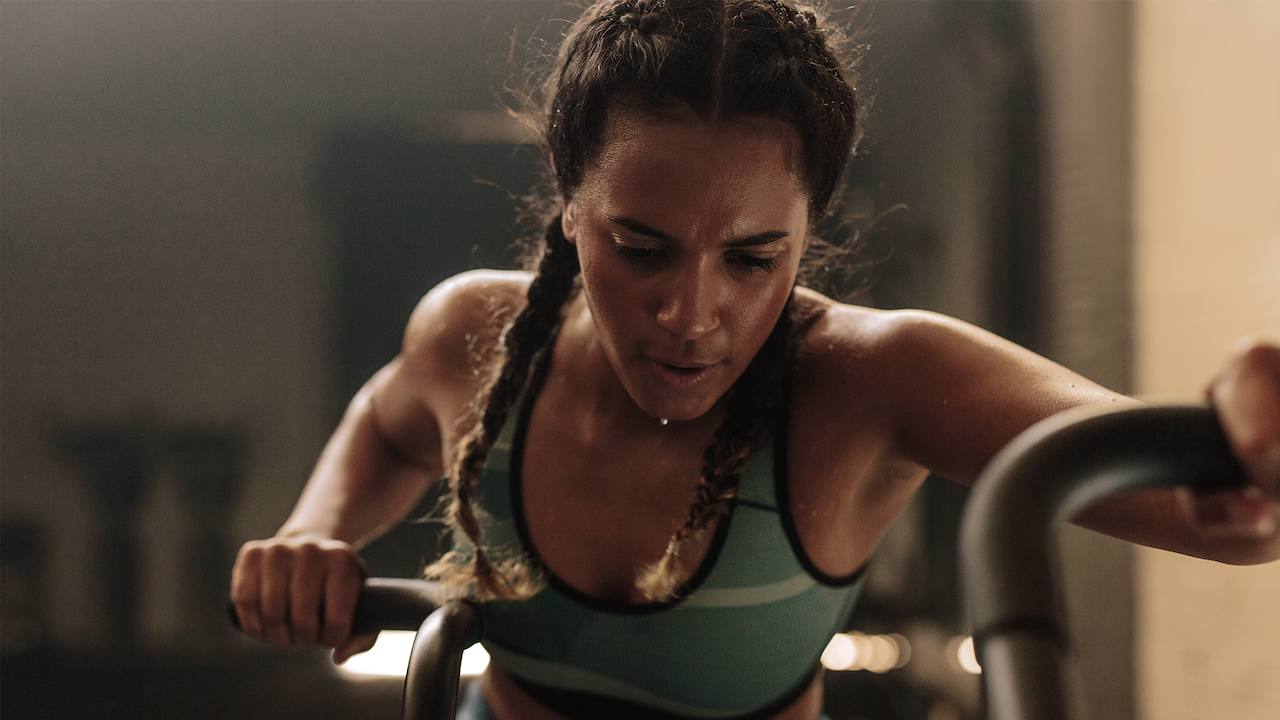Why HIIT Matters for Women’s Body and Brain Health
If you’ve been following me for a while, you know I love busting myths—especially in women’s training. One of the most persistent? “More long, steady cardio is always better.”
Don’t get me wrong—Zone 2 training has its place. It builds your aerobic base, supports mitochondrial health, and improves fat oxidation. But here’s the problem: as women, especially as we age, we’re already naturally well-adapted for endurance. We are born with more endurance muscle fibers and have a higher mitochondria density than men. In addition, we have estrogen, which helps increase our body's ability to use fat as a fuel.
Translation? We are super endurance queens who are built for the “steady grind,” which means Zone 2 alone won’t give us enough stimulus to keep progressing—or to protect muscle, bone, metabolism, and even brain function long-term.
Why Intensity Matters for Your Body
This is where High-Intensity Interval Training (HIIT) and Sprint Interval Training (SIT) come in:
- HIIT: Short bursts (45 seconds up to a few minutes) of near-max effort (85-90%), typically with 1:1 work to rest interval durations.
- SIT: Even shorter (20–30 seconds) all-out, max-effort sprints with longer recovery (up to 3-4 minutes).
Both push you well above your lactate threshold, forcing your body to adapt in powerful ways:
- Improved VO₂ max: The strongest predictor of cardiovascular fitness and longevity
- Increased stroke volume: A stronger, more efficient heart
- Better insulin sensitivity: Improved blood sugar control and metabolic health
- Fast-twitch fiber recruitment: Key for strength, power, and maintaining muscle mass as you age
- Hormonal benefits: Stimulates anabolic pathways that protect lean mass and bone density
Why Intensity Matters for Your Brain
Lately, I’ve been enjoying digging into some new research that shows the benefits of HIIT and SIT aren’t just physical—they’re cognitive too.
This research shows that HIIT can:
- Sharpen executive function: It can help boost planning, decision-making, precision, and thoroughness
- Improve mood: This study showed HIIT lessened feelings of tension, anger, and depression in female subjects, irrespective of menstrual cycle phase
- Improve brain health and mental health—but this study showed the effects were not as pronounced in postmenopausal women as they were in perimenopausal women
- Enhance working memory and attention: It can make it easier to focus, demonstrate self-control, and process information quickly
- Preserve brain structure: Long-term HIIT training can protect hippocampal volume (the brain’s memory center) and improve connectivity in brain networks
- Improve symptoms of anxiety and depression
Even a single session of HIIT or SIT can deliver short-term boosts in attention, memory, and mental clarity—perfect for days when you need to be on your game. This same study also found that people who had bigger increases in blood lactate tended to show more improvement in attention. Over weeks and months, these benefits build, supporting long-term brain health and resilience.
A big reason? HIIT increases BDNF (brain-derived neurotrophic factor)—a key chemical that supports neuroplasticity, learning, brain health, and mood. Higher BDNF levels are linked to better mental health and may help protect against conditions like depression, schizophrenia, and bipolar disorder.
For those interested in diving into the research around exercise, cognition, and brain health, I highly recommend reading this article. It highlights how some early research suggests that exercise might help reduce brain changes linked to Alzheimer’s and improve conditions like small vessel disease, a common cause of dementia.
So far, studies have mostly looked at how exercise affects gray matter in the brain (like the hippocampus, which is tied to memory). But new research shows exercise may also improve white matter (which helps with brain communication), brain blood flow, and overall brain connectivity. We still don’t fully understand how these changes relate to actual improvements in thinking and memory, but it’s exciting to know that there are more high-quality studies on the way that’ll help answer some of these questions.
How to Add HIIT/SIT to Your Week
If your training calendar is a wall of Zone 2 (and for all you endurance athletes out there, I get it!), here’s a simple shift:
- Replace one or two Zone 2 sessions per week with HIIT or SIT
- Warm up thoroughly, especially before all-out sprints
- Pair intensity with proper recovery (sleep, rest, meditation)—this is where the real adaptation happens
Here are a couple of examples of main sets (remember to always warm-up and cool down too):
HIIT Workout: 5 x 4 minutes as (2 minutes @ 85-90% effort, 2 minutes easy)
SIT Workout: 5 x (30 seconds all-out, 2-3 minutes recovery)
If you want to keep doing what you love for life—whether that’s running, riding, lifting, playing with your kids or grandkids, or staying sharp at work—the research clearly shows that you need more than steady-state training.
HIIT and SIT give you the best of both worlds—a stronger, fitter body, and a sharper, more resilient brain. That’s a combination that will pay off for decades.
IN OTHER NEWS…
What’s the Deal with Cortisol and HIIT/SIT?
Cortisol, the body’s natural stress hormone, can often be misunderstood, and it’s certainly something I receive a lot of questions about, especially in relation to the impact HIIT and SIT can have on our cortisol levels. You can learn more about the natural exercise-induced rise and drop of cortisol in this Instagram reel with me and Loretta. Remember, it’s chronically elevated cortisol levels over time that can do the damage, not the acute peak and dip caused by working out.
Feeling Tired, Stressed, or Brain Foggy?
Check out this recent YouTube video in which I run through my favorite supplements to help alleviate fatigue, stress, and brain fog. I know only too well that this can be one of the most challenging parts of perimenopause and menopause. If you’d like to learn more about supplements, there’s also my Bundled Microlearning Pack on supplements or individual Microlearnings on topics such as Creatine, Protein, and Adaptogens. There is an increasing amount of research showing the cognitive benefits of creatine supplementation.
|
ICYMI: New Recipes Now Online
If you’re looking for a few new recipe ideas, I’ve now got some on my website, such as High-Protein Mac & Cheese, High-Protein Pancakes, Overnight Oats, and the ever-popular Salty Balls.
Latest Podcasts
Here are a couple of recent podcasts I’ve been featured on:
- Wheel Talk: Performance for Women - Are We Really Optimizing All We Should?
- Master Knowledge Podcast: Dr. Stacy Sims on Upgrading Women’s Health in Fitness
Stay strong, stay well,
Forwarded this newsletter? You can sign up here to join my community!











